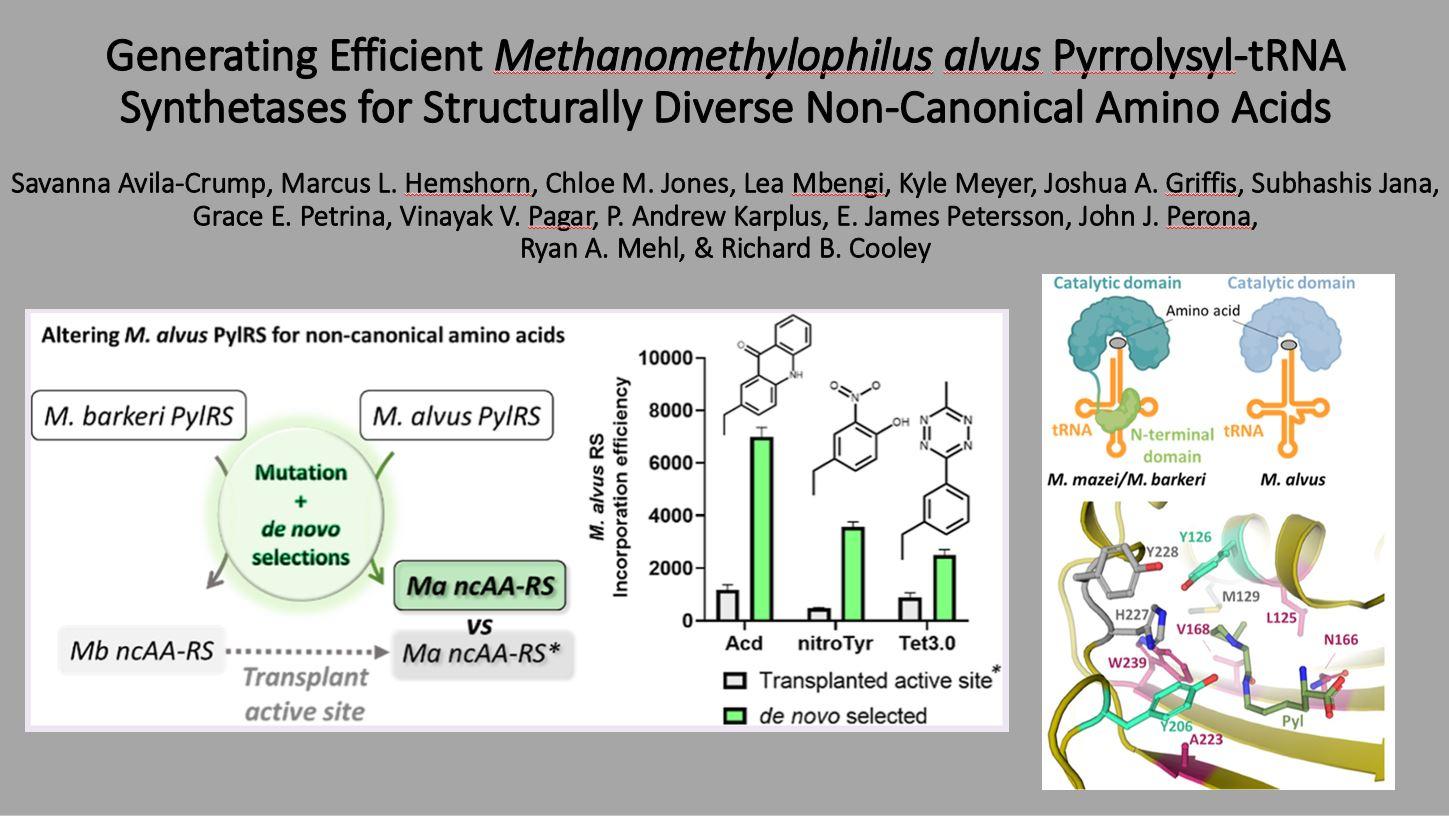Check out the latest publication from the Mehl/Cooley Lab!
Generating Efficient Methanomethylophilus alvus Pyrrolysyl-tRNA Synthetases for Structurally Diverse Non-Canonical Amino Acids
Genetic code expansion (GCE) technologies commonly use the pyrrolysyl-tRNA synthetase (PylRS)/tRNAPyl pairs from Methanosarcina mazei (Mm) and Methanosarcina barkeri (Mb) for site-specific incorporation of non-canonical amino acids (ncAAs) into proteins. Recently a homologous PylRS/tRNAPyl pair from CandidatusMethanomethylophilus alvusMx1201 (Ma) was developed that, lacking the N-terminal tRNA-recognition domain of most PylRSs, overcomes insolubility, instability, and proteolysis issues seen with Mb/Mm PylRSs. An open question is how to alter Ma PylRS specificity to encode specific ncAAs with high efficiency. Prior work focused on “transplanting” ncAA substrate specificity by reconstructing the same active site mutations found in functional Mm/Mb PylRSs in Ma PylRS. Here, we found that this strategy produced low-efficiency Ma PylRSs for encoding three structurally diverse ncAAs: acridonyl-alanine (Acd), 3-nitro-tyrosine, and m-methyl-tetrazinyl-phenylalanine (Tet3.0-Me). On the other hand, efficient Ma PylRS variants were generated by a conventional life/death selection process from a large library of active site mutants: for Acd encoding, one variant was highly functional in HEK293T cells at just 10 μM Acd; for nitroY encoding, two variants also encoded 3-chloro, 3-bromo-, and 3-iodo-tyrosine at high efficiency; and for Tet-3.0-Me, all variants were more functional at lower ncAA concentrations. All Ma PylRS variants identified through selection had at least two different active site residues when compared with their Mb PylRS counterparts. We conclude that Ma and Mm/Mb PylRSs are sufficiently different that “active site transplantation” yields suboptimal Ma GCE systems. This work establishes a paradigm for expanding the utility of the promising Ma PylRS/tRNAPyl GCE platform.
